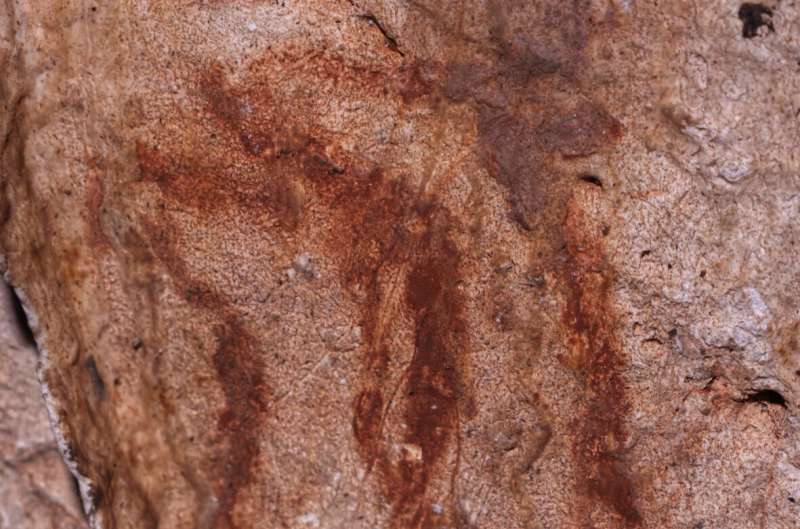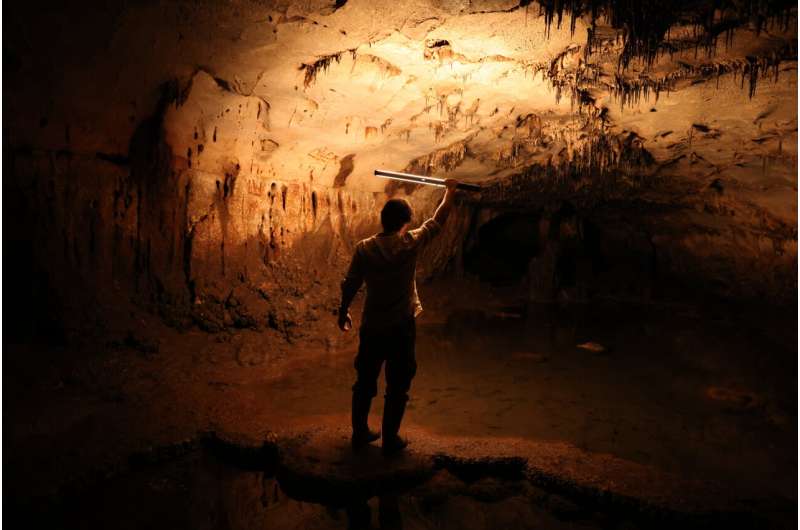Introduction
In a groundbreaking archaeological discovery, a team of researchers has unveiled a treasure trove of Palaeolithic cave art in “Cova Dones” or “Cueva Dones,” a cave site in Spain. With over 100 ancient paintings and engravings dating back at least 24,000 years, this finding ranks among the most significant on the Eastern Iberian Coast in Europe. Despite being a frequently visited site, the presence of Palaeolithic paintings remained concealed until June 2021 when researchers brought this remarkable revelation to light. The findings have been detailed in the prestigious journal ‘Antiquity.’
A Hidden Gem Near Valencia
Cueva Dones, a 500-meter-long cave located in close proximity to Valencia, has long been a popular destination for locals, hikers, and explorers. However, the existence of Palaeolithic paintings within its depths eluded detection until recently.
A Profound Discovery
Dr. Aitor Ruiz-Redondo, Senior Lecturer of Prehistory at the University of Zaragoza and a research affiliate at the University of Southampton, remarked, “When we saw the first painted auroch [extinct wild bull], we immediately acknowledged it was important. Although Spain is the country with the largest number of Palaeolithic cave art sites, most of them are concentrated in northern Spain. Eastern Iberia is an area where few of these sites have been documented so far.” The realization of the site’s immense significance dawned on the researchers only after they initiated a systematic survey.

Unveiling Cueva Dones
The research team, led by Dr. Ruiz-Redondo, Dr. Virginia Barciela-González, Senior Lecturer of Prehistory at the University of Alicante, and Dr. Ximo Martorell-Briz, an affiliate researcher at the University of Alicante, meticulously documented more than a hundred motifs within Cueva Dones.
A Plethora of Artistic Treasures
The research abstract published on the Cambridge website reveals the team’s remarkable findings. They identified “more than 110 graphic units, including at least 19 zoomorphic representations, located in three different zones of the cave.” These representations include horses, hinds (female red deer), aurochs, stags, and other enigmatic creatures. In addition to animal depictions, the cave art includes conventional signs such as rectangles and meanders, as well as panels of ‘macaroni’ or ‘flutings’ created with either fingers or tools dragged across a soft surface. The cave also houses isolated lines and some poorly preserved unidentified paintings.
Diverse Artistic Techniques
What sets Cueva Dones apart is not just the quantity of ancient artworks but also the diversity of techniques used in their creation. Most notably, many of the paintings were fashioned using clay. The ancient artists would spread clay on their fingers and palms and apply it to the cave walls. The humid cave environment allowed the paintings to dry slowly, preserving them over thousands of years. Although clay painting is a known art form in Palaeolithic art, instances of its usage or preservation are exceedingly rare.

The Ongoing Exploration
While this discovery marks a significant milestone, it represents just the beginning of the journey. Scientists anticipate that further exploration of Cueva Dones will unveil more art and insights into the lives and beliefs of our distant ancestors. With each revelation, this Palaeolithic masterpiece continues to captivate and inspire, shedding light on humanity’s artistic and cultural legacy.
Feature Image: Partly flooded chamber which contains most of the motifs. Courtesy: A Ruiz-Redondo
Drones Unlock Ancient Neolithic Cave Paintings in Alicante, Spain

Contributor






